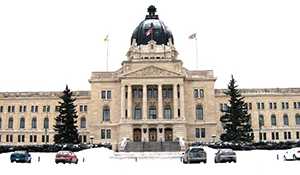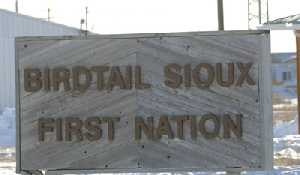New Upland Pipeline details released
June 9, 2015, 1:51 am
Kevin Weedmark


While the Upland Pipeline is still just a proposal, TransCanada has released more information about what the pipeline project would look like.
The pipeline is being proposed to carry Bakken crude from North Dakota to the Moosomin TransCanada compressor station, where the crude would connect to the Energy East project carrying crude oil east.
There is already one proposed pipeline to feed into Energy East at the Moosomin Compressor Station, from Cromer, Manitoba.
A map of the proposed pipeline shows a wide swath of southeast Saskat-chewan where the pipeline could be built. The pipeline could be built to connect with the feeder pipeline at Cromer, or directly to the Moosomin compressor station.
Between now and 2018, TransCanada plans to submit applications to the U.S. State Department to have the pipeline cross the border, to the North Dakota Public Service Commission, and to the National Energy Board, which is the federal regulatory body for pipelines in Canada.
Construction would begin in 2019, and the expected in-service date would be 2020, according to TransCanada.
The project would transport up to 300,000 barrels of crude per day. “The Upland project will help alleviate some of the crude by rail bottleneck in North Dakota with a more efficient and less energy intensive way to transport needed oil,” said TransCanada spokesman Mark Cooper.
According to TransCanada, “Significant increases in Williston Basin crude oil production in recent years have resulted in production exceeding pipeline take away capacity. Positive results from an open season (a request to shippers to determine interest) helped TransCanada determine the feasibility and scope of the Upland project.”
The company has been working on initial environmental assessments.
“Earlier in 2014, we asked landowners along or near the proposed route for permission to access their lands for the purpose of conducting initial environmental assessments. The results of those assessments and discussions with government representatives and regulatory agencies helped us to understand important routing information for the pipeline.”
No decision has been made on the Canadian route. “In addition to refining the proposed route in the US, we continue to do survey work in the Canadian study area . . . We anticipate that we’ll be able to make a decision on our preferred route in Canada within the next several months.”
Trans-Canada has already submitted an application for a Presidential Permit to cross the international border. That permit is what has held up TransCanada’s Keystone XL pipeline, proposed to carry Canadian crude to US markets.
As part of the Energy East proposal, TransCanada already planned a feeder pipeline from Cromer, Manitoba to the Moosomin Compressor Station, and a 1,050,000 barrel tank farm at the Moosomin Compressor Station to allow the production from Bakken oilfields in Saskatchewan and Manitoba to be added to the TCPL main line and shipped to eastern Canada.



































